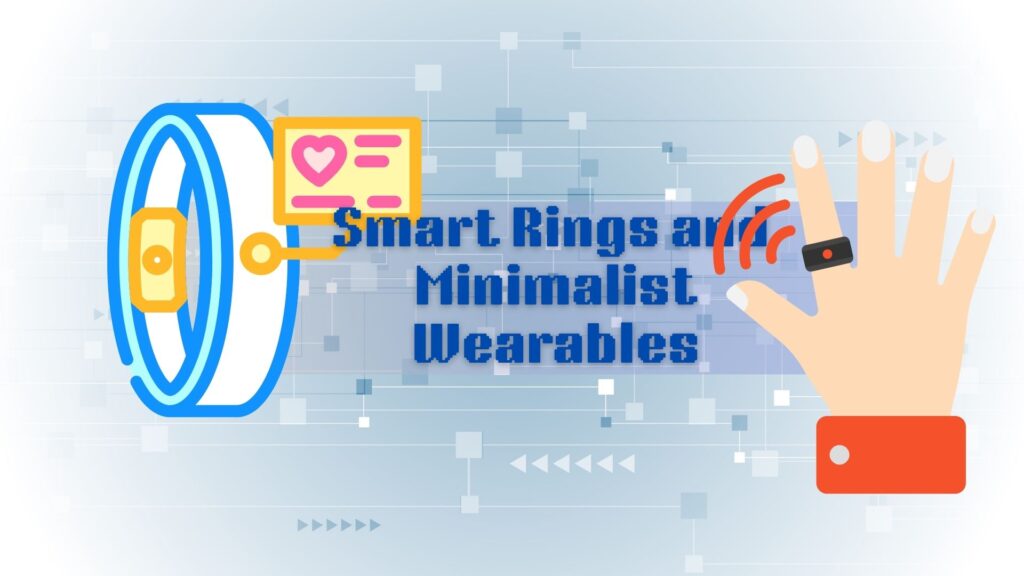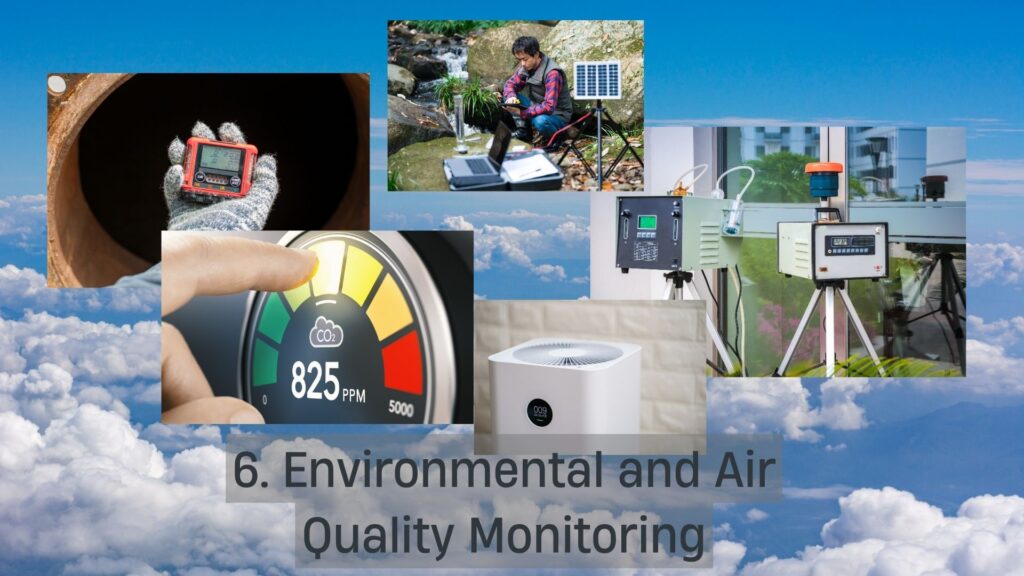Introduction: The Evolving World of Wearables
When wearable technology first entered the mainstream, it was largely defined by fitness trackers and step counters. Fast forward to 2025, and wearables have evolved far beyond calorie counting and workout reminders. Today’s wearable devices are smarter, more diverse, and deeply integrated into daily life—supporting everything from chronic disease management and mental health monitoring to productivity, fashion, and even environmental awareness.
In this article, we explore the latest innovations in wearable tech that go far beyond fitness, shedding light on how these gadgets are changing the way we live, work, and care for ourselves in this connected world.
1. Health Monitoring: From Vitals to Chronic Conditions
Wearable technology is quickly becoming a frontline tool for preventive healthcare and early detection. Devices today can monitor much more than just your heart rate—they track blood oxygen levels, blood pressure, skin temperature, and even electrocardiograms (ECGs).
What's New in 2025:
Smartwatches with Non-Invasive Glucose Monitoring: Several tech companies, including Apple and Samsung, are in advanced stages of launching smartwatches that can measure blood glucose without a needle—revolutionizing life for people with diabetes.
Continuous Blood Pressure Monitoring: Advanced sensors now allow for 24/7, cuff-less monitoring to help people manage hypertension and detect irregularities early.
Sleep Apnea Detection: New wearable sleep bands and headbands analyze sleep quality and breathing patterns to detect signs of sleep disorders.
These innovations are empowering users to track and understand their health in real-time—reducing dependency on clinic visits and enabling proactive health decisions.
2. Mental Health and Stress Tracking
Mental well-being has become a major focus for wearable tech companies. Devices now integrate sensors that monitor stress levels through indicators such as heart rate variability, skin conductance, and breathing rhythms. By analyzing these biometrics, wearables provide real-time stress scores and prompt users to engage in stress-reducing activities.
Innovations in 2025:
Mood-Aware Wearables: Devices like the “Muse S” headband and Fitbit’s stress tracking use biometric data such as heart rate variability (HRV) and skin conductance to identify stress levels and emotional changes.
Mindfulness and Meditation Feedback: Wearables now offer real-time coaching, reminding users to breathe, take breaks, or engage in guided meditations when stress levels spike.
Neurofeedback Devices: New entrants like “Kernel Flow” and “Cognixion One” use neurotech to help users improve focus, reduce anxiety, and manage symptoms of ADHD and PTSD.
With mental health needs on the rise, these tech tools are helping to fill a critical gap between clinical care and daily emotional self-care.
3. Smart Rings and Minimalist Wearables
While smartwatches remain popular, smart rings and low-profile devices are gaining traction for their convenience and discreet design.

Examples in 2025:
Oura Ring Gen 4: Continues to lead with health metrics such as sleep stages, activity tracking, and menstrual cycle predictions—all in a ring.
Ultrahuman Ring AIR: A stylish and lightweight ring that monitors metabolic health and provides real-time insights to optimize energy and recovery.
Circular Ring: Offers custom alerts and smart alarms based on your sleep and health data, improving daily productivity and wellness.
These ultra-wearables allow users to access powerful health and lifestyle features without bulky devices, appealing to professionals and minimalists alike
4. Fashion-Forward Wearables: Where Tech Meets Style
The fashion industry is now fully embracing wearable tech, creating a new category of smart fashion that’s not just functional but also aesthetically impressive.
Notable Developments:
Smart Jewelry: Brands like Ringly and Bellabeat offer rings, bracelets, and pendants that double as step counters, stress trackers, and notification centers.
Heated Clothing and Self-Cooling Apparel: Wearable clothing items that adapt to body temperature are making their way into athletic and winter fashion.
E-Ink Fabric Displays: Clothing items that can change patterns or colors via smartphone apps, letting users customize their look in real time.
This intersection of tech and fashion is turning wearables into personal expression tools—blending innovation with style.
5. Productivity and Workplace Integration
Wearables are no longer just for wellness—they’re now being integrated into workplaces to boost productivity, safety, and focus.
Key Workplace Applications:
Focus-Enhancing Headbands: Devices like “FocusCalm” use EEG sensors to measure brainwave activity and promote mental clarity during work or study sessions.
Smart Glasses for AR Tasks: Devices like Vuzix and XREAL Air are enabling remote support, hands-free navigation, and immersive AR presentations in industries ranging from logistics to healthcare.
Employee Wellness Programs: Many companies now issue wearables to employees to promote healthy habits, reduce burnout, and gather anonymized wellness data.
These integrations are streamlining how we work and support employee well-being in a post-pandemic, hybrid-working world
6. Environmental and Air Quality Monitoring
Modern wearables are also helping users become more aware of their environmental impact and personal safety.

Features Gaining Attention:
Air Quality Trackers: Devices like Atmotube Pro and AirBeam3 detect pollution, allergens, and harmful gases, helping sensitive individuals make safer choices.
UV Exposure Monitoring: Wearables now include UV sensors to alert users of harmful sun exposure and recommend SPF use.
Smart Patches: Stick-on wearables that track hydration, pollution exposure, and even radiation—particularly useful for outdoor workers or those in high-risk areas.
These wearables are not just about the self—they help users make better decisions based on their external environment
7. Medical Wearables & Remote Patient Monitoring
A major leap in wearable tech has been its adoption in the medical field—especially for remote care and continuous patient monitoring.
Current Innovations:
BioPatch Devices: Wearables like VitalConnect allow doctors to track vital signs remotely, reducing the need for hospital stays.
Smart Contact Lenses: Under development to monitor glucose levels through tear fluid and potentially provide AR overlays.
Implantable Wearables: Although still in early stages, subdermal wearables for cardiac monitoring or seizure detection are on the horizon.
With telemedicine and remote care expanding, wearables are key tools in patient-centered, data-driven healthcare delivery
Conclusion: The Future is Wearable—and It’s Just Beginning
As 2025 unfolds, it’s clear that wearable technology has moved far beyond basic fitness tracking. With applications in mental health, chronic disease management, environmental awareness, fashion, and productivity, the wearable tech revolution is now shaping how we experience life every moment of the day.
Whether you’re a tech enthusiast, a healthcare professional, or just someone looking for ways to feel better and live smarter, today’s wearable devices offer real value that goes far beyond counting steps.
As innovation continues, expect to see more seamless, stylish, and intelligent devices that don’t just monitor you—but empower you.


